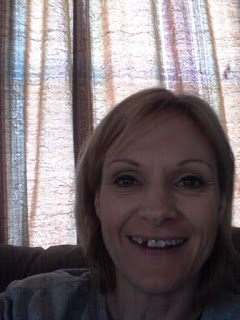Have Diabetes? Taking Antacids Might Help You Manage Your Blood Sugar
Drugs For Treatment Of Cholestatic Jaundice
'? Welcome to this page which serves as an archive for medications that are relevant to the
. The page includes both the generic and brand names and can serve as an invaluable resource for healthcare professionals and individuals who wish to get an insight on different medication options.
Click on a medication below to view details including brand names, prices, dosages, side effects, and administration guidelines.
A FAQ section has been added for each medication, addressing popular customer inquiries that provides a deeper insight into its use for
.
We recommend consulting your doctor to verify the information presented on this page or for any additional clarifications.
Can Cholecystitis Cause Jaundice?
Cholecystitis, or gallbladder inflammation, can sometimes cause jaundice if something blocks the flow of bile from the gallbladder.
Cholecystitis refers to inflammation of the gallbladder. There are several possible causes, the most common of which is gallstones.
Sometimes, gallstones pass on their own. However, when they get stuck and block the ducts through which bile usually travels, this can lead to jaundice.
This article will discuss jaundice and cholecystitis, signs, treatment, outlook, and frequently asked questions.
Jaundice is a yellowing of the skin and eyes from an accumulation of excess bilirubin in the body.
Bilirubin is a waste product that results from the death of old or damaged red blood cells.
Usually, the liver converts bilirubin into a water-soluble state known as conjugated, or direct bilirubin. This allows it to mix with bile and exit the body through the stool and urine.
The liver makes bile, which the gallbladder then stores. During food intake, the gallbladder releases bile to help digest certain foods.
Cholecystitis can cause jaundice because of how it interferes with how the gallbladder usually secretes bile.
The gallbladder can concentrate bile and form sludge or stones, which can cause blockages in the typical drainage of bile.
The gallbladder wall can then become swollen and inflamed, which doctors call cholecystitis.
The most common cause of cholecystitis is gallstones. Other possible causes include:
Learn more about cholecystitis.
Jaundice makes a person's skin and the whites of their eyes look yellow, though skin color changes may be less noticeable in darker skin.
Some of the signs of jaundice and cholecystitis are the same, including:
Symptoms of cholecystitis also include:
Since removed gallstones often recur after about 1 year, the preferred treatment for cholecystitis with gallstones is to remove the entire gallbladder. This type of surgery is called a cholecystectomy.
Doctors can perform a laparoscopic cholecystectomy, which involves removing the gallbladder through a small incision. They can also perform an open cholecystectomy, which involves a larger incision, and bile duct explorative procedures to remove stones.
For those unable to undergo surgery, doctors may recommend placing a cholecystostomy tube. They insert this tube from the skin in the upper abdomen, and it drains the contents of the gall bladder.
If a bacterial infection is present, doctors can prescribe antibiotics.
Without treatment, acute cholecystitis can progress to gallbladder tissue death and perforation. Gallbladder perforation refers to a hole in the gallbladder, and this can lead to sepsis, shock, and death.
However, with surgery to remove the gallbladder, the outlook is usually positive.
There are some risks relating to surgery:
In addition, about 10% of people experience post-cholecystectomy syndrome (PCS). With PCS, individuals continue to experience some of their pre-surgery pain and gastrointestinal symptoms.
The following are answers to common questions about jaundice and cholecystitis.
What happens to the liver in cholecystitis?When acute cholecystitis occurs with gallstones, impaired liver function can occur.
A cause is gallbladder infection that reaches the liver through lymph circulation or the bile duct.
Which bilirubin is elevated in cholecystitis?Cholecystitis features elevated conjugated bilirubin levels. This is the bilirubin that the liver has converted to a water-soluble form, in preparation for secretion via bile into the stool.
Because cholecystitis hinders the gallbladder's ability to secrete bile for digestion and waste elimination, the conjugated bilirubin builds up instead of leaving the body.
How do doctors diagnose cholecystitis?To diagnose cholecystitis, doctors will take a complete medical history and perform a physical examination, blood tests, and imaging tests, which may include ultrasound, CT scan, or hepatobiliary scan.
Cholecystitis can sometimes cause jaundice. This can occur when the liver sustains an injury or when gallstones prevent bile from clearing bilirubin from the body.
Doctors can treat cholecystitis with surgery and prescribe antibiotics if an infection is present.
While sometimes gallstones can pass on their own, untreated cholecystitis can lead to severe consequences if it progresses.
Home Jaundice Treatment Available Due To Funding
Newborn babies cared for by an NHS trust can receive treatment for jaundice in their own homes thanks to new funding.
Traditionally, families have had to take their babies to hospital for treatment.
But after funding from Royal Surrey Charity, a trained healthcare professional from the Royal Surrey NHS Foundation Trust will visit homes equipped with portable phototherapy devices.
Jo Macleod, consultant neonatal nurse at Royal Surrey, said: "We know the toing and froing to hospital disrupts the bonding period for families and can create stress."
Jaundice is a common condition in newborn babies caused by elevated levels of bilirubin, a yellow pigment found naturally in the blood.
While normal for babies to have the condition to some degree, in a very small number of cases it can develop into permanent brain damage and must be treated.
The standard treatment is exposure to light waves, known as phototherapy.
The new at-home phototherapy project is backed by £30,000 of funding from Royal Surrey Charity that was secured through the trust's Bid for Better 2023 initiative.
Ms Macleod added: "Treating jaundice in the home is simple with the right equipment and not only enhances convenience for families but also promotes bonding and reduces the stress associated with hospital visits."



Comments
Post a Comment